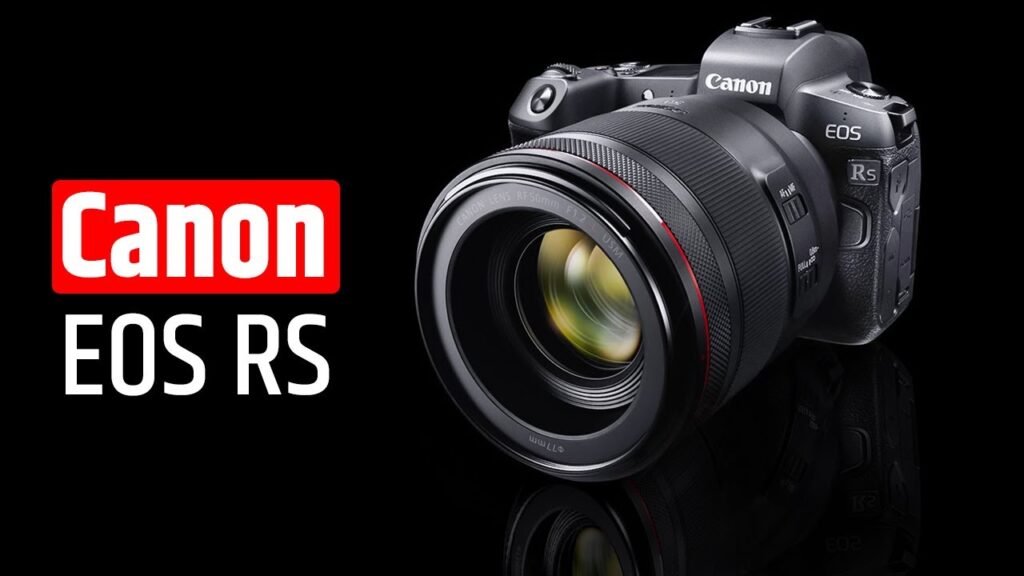Canon enthusiasts are eagerly awaiting the potential launch of the EOS RS, a camera that’s been generating a mix of excitement and skepticism. While rumors can be unpredictable, some of the features being tossed around seem almost too good to be true—and yet, here we are.
The EOS RS is believed to be Canon’s next high-resolution mirrorless model, expected to push boundaries in both photo and video capabilities. Some sources even suggest the camera might go by the name EOS R5 instead, due to visibility issues with the original label. Regardless of its final name, early leaks and whispers suggest Canon is aiming for a camera that blends sheer resolution, advanced stabilization, and top-tier video features.
In this article, we’ll break down the rumored specs, how they compare with Canon’s current lineup and competing models, and what photographers and videographers might expect if these details turn out to be true.
Today’s Best EOS R6 Mark II Amazon Deal

Mason knows photography inside and out. With 15 years of hands-on experience, he’s written about cameras, lenses, and gear of all kinds. He even spent five years as a journalist, diving deep into music and writing sharp, engaging stories. Now, Mason shares his photography knowledge, helping readers find the right gear and perfect their skills. He’s also proud of his unbeatable Wordle streak!
Expected Features of the Canon EOS RS
Sensor and Image Quality
One of the most talked-about specs is the resolution. According to two separate sources, the EOS RS is expected to feature a 45MP sensor, though one claimed it could be 40MP. This puts it in high-resolution territory, designed to capture incredibly detailed stills suitable for large prints, high-end commercial work, or tight cropping without losing quality.
With built-in image stabilization (IBIS) expected, the RS could offer up to 5 stops of correction on its own and up to 7-8 stops when paired with a stabilized lens. That makes handheld shooting more viable in low light and improves sharpness across the board.
Although some of this sounds similar to what we’ve already seen in Canon’s EOS R5, it’s the refinements that stand out. This might be Canon’s most aggressive push into the high-resolution full-frame mirrorless space to date.
Autofocus and Performance
Performance-wise, Canon seems to be pushing the limits here too. Rumors suggest the EOS RS will shoot at 14 frames per second (fps) with the mechanical shutter and 20 fps using the electronic shutter. Another source mentioned 12 fps / 20 fps instead, but either way, it indicates strong burst capabilities suitable for action, wildlife, or sports photography, not typically the domain of high-resolution cameras.
Canon’s Dual Pixel CMOS AF II or III system will likely handle autofocus. Though not confirmed, it would be surprising if Canon didn’t equip the RS with its latest autofocus tech. Canon has been praised for fast and reliable eye tracking, subject detection, and overall AF accuracy, and the RS will likely build on that.
Video Capabilities
Here’s where things really go off the rails—in the best way possible.
Only one source provided video specs, but if true, the EOS RS could be a massive leap forward for Canon video. According to the leak, the camera will offer 8K video at 30fps in RAW format, 4K at 120fps, and 4K at 60fps. That’s not just high-resolution stills—it’s cinema-level video.
Such specs put the RS squarely in hybrid shooter territory. If you’re someone who juggles photography and filmmaking, this could be the kind of one-body-does-it-all camera you’ve been waiting for.
There is some confusion around whether these video modes come with a crop. One source mentioned it, but the details were unclear. Canon has previously been criticized for cropping in 4K and 8K modes, so we’ll need to wait and see how this unfolds.
Build and Design
Ergonomically, the EOS RS appears to build on the EOS R line but with some key changes. Gone is the much-debated touch bar, replaced by a more traditional scroll wheel on the back of the camera—a move that many Canon users will welcome.
A Liveview/Movie toggle switch, reminiscent of Canon’s DSLR layout, is also expected. This subtle nod to Canon’s DSLR roots may make the transition easier for those upgrading from older models like the 5D Mark IV.
The battery is expected to be larger in capacity but shaped like the current LP-E6 series. That means compatibility with existing gear, but with the benefit of longer shooting time—a smart move if Canon really is packing in 8K RAW video recording.
Release Date and Pricing
As of now, Canon has not officially announced the EOS RS. However, rumors suggest that the announcement is scheduled to happen just ahead of CP+ in Japan, which is typically held in late February. If that timeline is accurate, we could see a formal reveal by late 2025, with availability possibly following in the second half of the year.
When it comes to pricing, nothing is confirmed, but given the specs, it’s safe to assume this won’t be a budget option. Early estimates suggest a starting price of around $4,999, placing it in the same league as other high-resolution, high-performance mirrorless cameras from Sony and Nikon.
Canon seems to be positioning the RS as a flagship hybrid body for professionals who want both serious stills and pro-level video. That price might sound steep, but for those who need this level of performance, it could still represent solid value.
Competitor Comparison
Sony Alpha 7R V
Sony’s Alpha 7R V stands as one of the most formidable rivals to the rumored Canon EOS RS. With a 61MP full-frame sensor, it leads the way in high-resolution mirrorless imaging. It also features Sony’s advanced AI-powered autofocus system, which tracks subjects with impressive accuracy using deep learning and real-time recognition. In terms of video, the A7R V supports 8K at 24fps and oversampled 4K footage from the full sensor readout, making it appealing to hybrid shooters.
If the rumored EOS RS ends up with a slightly lower resolution—somewhere around 45MP or possibly 40MP—Sony will retain the megapixel crown. However, resolution isn’t everything. Where Canon may pull ahead is usability. The removal of the Touch Bar (which some users disliked on the R5), the return of familiar physical controls, and a more intuitive user interface may offer a smoother shooting experience. Autofocus could also be a deciding factor. If Canon delivers with Dual Pixel CMOS AF III and pushes performance further, it may close the gap with Sony’s AI-tracking capabilities.
Nikon Z8
Nikon’s Z8 is another strong player in this space. It offers a 45.7MP stacked CMOS sensor and supports both 8K/60p and 4K/120p video recording, making it a true hybrid machine for professionals. It carries over many of the Z9’s flagship features but in a smaller, lighter, and more affordable body. For shooters who want high-end stills and video without the bulk of a full flagship, the Z8 is a well-rounded and proven option.
The Canon EOS RS is expected to match or exceed the Z8 in terms of resolution. It might also offer more effective in-body image stabilization (IBIS), with up to 8 stops of correction when paired with lens stabilization. Where Canon might really pull ahead is in video specs, particularly if 8K RAW and 4K/120p recording with better heat management actually materialize. At the moment, Nikon holds the advantage by being available now, but Canon could change that narrative quickly if the specs deliver.
Canon EOS R5
Within Canon’s own lineup, the EOS R5 is still a fan favorite. It brought an 8K video and a solid 45MP sensor to the table, but it wasn’t without flaws. Overheating issues during longer video shoots and recording limitations in high frame rates left some creators wanting more.
The EOS RS is shaping up to be the answer to those concerns. If it includes improved cooling, higher capacity batteries, and enhanced recording times—as the rumors suggest—it could represent a true leap forward. For R5 users looking for more speed, better stabilization, and pro-level video features, the RS may well be the upgrade they’ve been waiting for.
Final Thoughts and Recommendations
The Canon EOS RS (or whatever it ends up being called) looks to be Canon’s boldest step yet in the high-resolution mirrorless space. Whether it’s the improved ergonomics, powerful video specs, or better image stabilization, the RS seems to check all the right boxes—at least on paper.
While we should treat these details as speculative, the consistency across sources and Canon’s history of pushing boundaries makes this rumor worth paying attention to. This camera is clearly aimed at professionals who demand top-tier performance in both stills and video.
If you’re a Canon user thinking about upgrading or a hybrid shooter needing a camera that can truly do it all, the RS could be worth the wait. Keep your eye on CP+ for potential announcements, and maybe—just maybe—start saving up.


